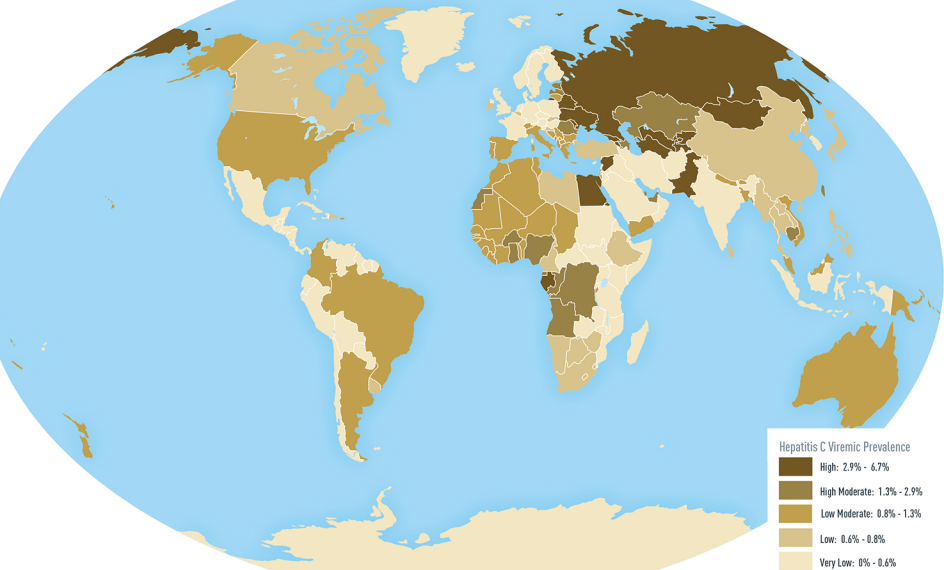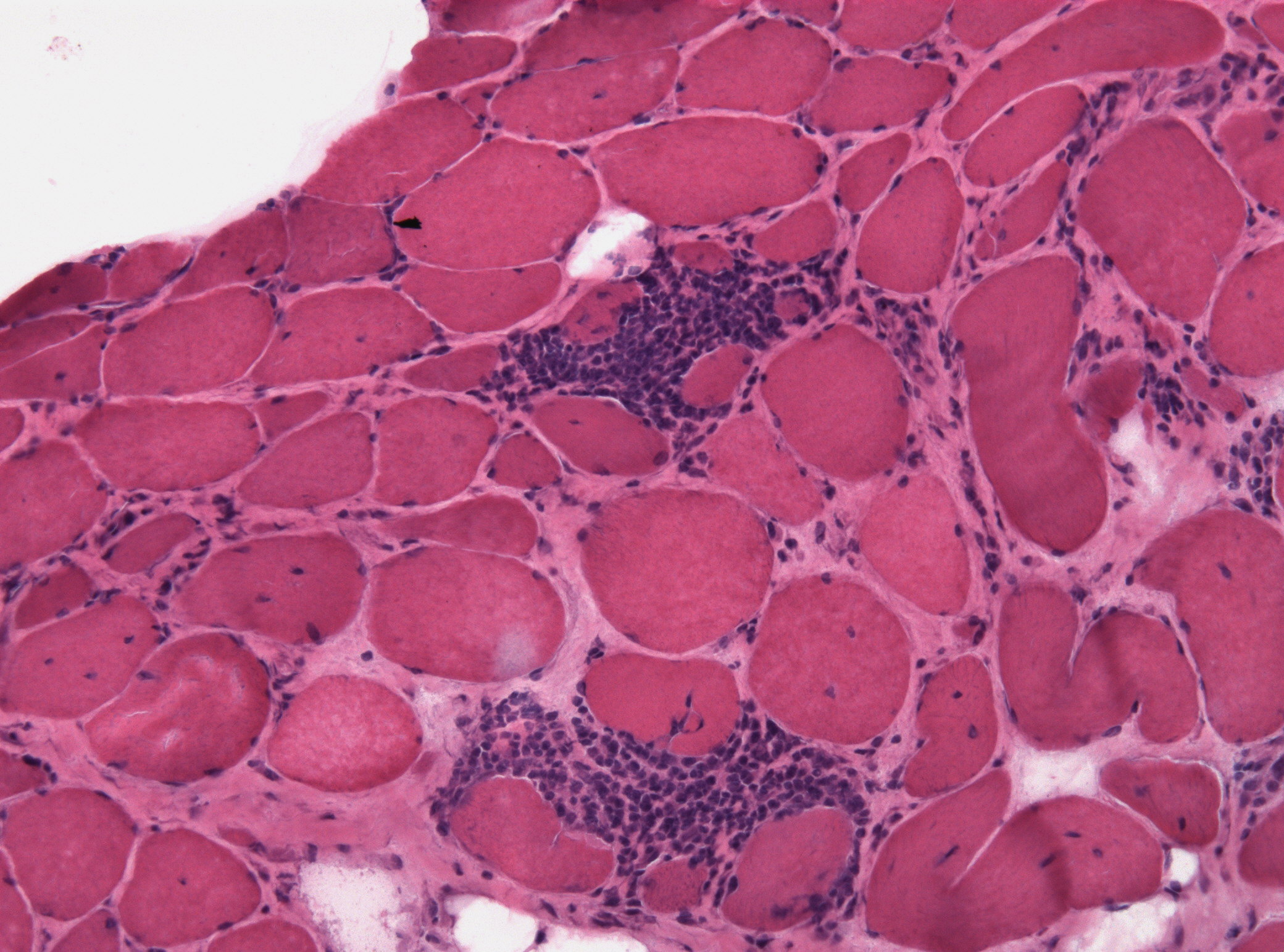|
Human T-lymphotropic Virus
The human T-lymphotropic virus, human T-cell lymphotropic virus, or human T-cell leukemia-lymphoma virus (HTLV) family of viruses are a group of human retroviruses that are known to cause a type of cancer called adult T-cell leukemia/lymphoma and a demyelinating disease called HTLV-1 associated myelopathy/tropical spastic paraparesis (HAM/TSP). The HTLVs belong to a larger group of primate T-lymphotropic viruses (PTLVs). Members of this family that infect humans are called HTLVs, and the ones that infect Old World monkeys are called Simian T-lymphotropic viruses (STLVs). To date, four types of HTLVs (HTLV-1, HTLV-2, HTLV-3, and HTLV-4) and four types of STLVs (STLV-1, STLV-2, STLV-3, and STLV-5) have been identified. HTLV types HTLV-1 and HTLV-2 viruses are the first retroviruses discovered. Both belong to the oncovirus subfamily of retroviruses and can transform human lymphocytes so that they are self-sustaining in vitro. The HTLVs are believed to originate from interspecies tr ... [...More Info...] [...Related Items...] OR: [Wikipedia] [Google] [Baidu] |
Human T-lymphotropic Virus 1
Human T-cell lymphotropic virus type 1 or human T-lymphotropic virus (HTLV-I), also called the adult T-cell lymphoma virus type 1, is a retrovirus of the human T-lymphotropic virus (HTLV) family that has been implicated in several kinds of diseases including very aggressive adult T-cell lymphoma (ATL), HTLV-I-associated myelopathy, uveitis, ''Strongyloides stercoralis'' hyper-infection and some other diseases. It is thought that about 1–5% of infected persons develop cancer as a result of the infection with HTLV-I over their lifetimes. Adult T-cell lymphoma (ATL) was discovered in 1977 in Japan. The symptoms of ATL were different from other lymphomas known at the time. It was suggested that ATL is caused by the infection of a retrovirus called ATLV. Strikingly, ATLV had the transforming activity in vitro. These studies established that the retrovirus infection is the cause of ATL. The retrovirus is now generally called HTLV-I because later studies proved that ATLV is the same ... [...More Info...] [...Related Items...] OR: [Wikipedia] [Google] [Baidu] |
Simian-T-lymphotropic Virus
Simian-T-lymphotropic viruses, also Simian T-cell leukemia viruses (STLVs), are retroviruses closely related to the human sexually and breastfeeding transmissible viruses HTLV. They have subtypes 1 through 4 as compared to HTLV 1 through 4, and each subtype has its own serovars. Together they comprise PTLVs (primate T-lymphotropic viruses) A study has shown that STLV-1 Tax and SBZ proteins have similar functions to their counterparts of HTLV-1. STLV-1 is oncogenic Carcinogenesis, also called oncogenesis or tumorigenesis, is the formation of a cancer, whereby normal cells are transformed into cancer cells. The process is characterized by changes at the cellular, genetic, and epigenetic levels and abno ... in Japanese macaques. In particular, the HTLV-I/STLV-I history might suggest a simian migration from Asia to Africa not much earlier than 19,500–60,000 years ago. References External links * * * * * * * Deltaretroviruses {{virus-stub ... [...More Info...] [...Related Items...] OR: [Wikipedia] [Google] [Baidu] |
Robert Gallo
Robert Charles Gallo (; born March 23, 1937) is an American biomedical researcher. He is best known for his role in establishing the human immunodeficiency virus (HIV) as the infectious agent responsible for acquired immune deficiency syndrome (AIDS) and in the development of the HIV blood test, and he has been a major contributor to subsequent HIV research. Gallo is the director and co-founder of the Institute of Human Virology (IHV) at the University of Maryland School of Medicine in Baltimore, Maryland, established in 1996 in a partnership including the State of Maryland and the City of Baltimore. In November 2011, Gallo was named the first Homer & Martha Gudelsky Distinguished Professor in Medicine. Gallo is also a co-founder of biotechnology company Profectus BioSciences, Inc. and co-founder and scientific director of the Global Virus Network (GVN). Gallo was the most cited scientist in the world from 1980 to 1990, according to the Institute for Scientific Information, and ... [...More Info...] [...Related Items...] OR: [Wikipedia] [Google] [Baidu] |
Leukemia
Leukemia ( also spelled leukaemia and pronounced ) is a group of blood cancers that usually begin in the bone marrow and result in high numbers of abnormal blood cells. These blood cells are not fully developed and are called ''blasts'' or ''leukemia cells''. Symptoms may include bleeding and bruising, bone pain, fatigue, fever, and an increased risk of infections. These symptoms occur due to a lack of normal blood cells. Diagnosis is typically made by blood tests or bone marrow biopsy. The exact cause of leukemia is unknown. A combination of genetic factors and environmental (non-inherited) factors are believed to play a role. Risk factors include smoking, ionizing radiation, petrochemicals (such as benzene), prior chemotherapy, and Down syndrome. People with a family history of leukemia are also at higher risk. There are four main types of leukemia— acute lymphoblastic leukemia (ALL), acute myeloid leukemia (AML), chronic lymphocytic leukemia (CLL) and chronic myeloi ... [...More Info...] [...Related Items...] OR: [Wikipedia] [Google] [Baidu] |
Virus Cancer Link
An oncovirus or oncogenic virus is a virus that can cause cancer. This term originated from studies of acutely transforming retroviruses in the 1950–60s, when the term "oncornaviruses" was used to denote their RNA virus origin. With the letters "RNA" removed, it now refers to any virus with a DNA or RNA genome causing cancer and is synonymous with "tumor virus" or "cancer virus". The vast majority of human and animal viruses do not cause cancer, probably because of longstanding co-evolution between the virus and its host. Oncoviruses have been important not only in epidemiology, but also in investigations of cell cycle control mechanisms such as the retinoblastoma protein. The World Health Organization's International Agency for Research on Cancer estimated that in 2002, infection caused 17.8% of human cancers, with 11.9% caused by one of seven viruses. A 2020 study of 2,658 samples from 38 different types of cancer found that 16% were associated with a virus. These cancers mi ... [...More Info...] [...Related Items...] OR: [Wikipedia] [Google] [Baidu] |
Tropical Spastic Paraparesis
Tropical spastic paraparesis (TSP), is a medical condition that causes weakness, muscle spasms, and sensory disturbance by human T-lymphotropic virus resulting in paraparesis, weakness of the legs. As the name suggests, it is most common in tropical regions, including the Caribbean. Blood transfusion products are screened for human T-lymphotropic virus 1 (HTLV-1) antibodies, as a preventive measure. Signs and symptoms Some of the signs of Tropical spastic paraparesis are: :::::::*Leg instability :::::::*Urinary dysfunction. :::::::*Bowel dysfunction :::::::*Back pain :::::::*Erectile problems :::::::*Psoriasis Individuals with TSP may also exhibit uveitis (inflammation of the uveal tract of the eye), arthritis (inflammation of one or more joints), pulmonary lymphocytic alveolitis (inflammation of the lung tissues), polymyositis (an inflammatory muscle disease), keratoconjunctivitis sicca (persistent dryness of the cornea and conjunctiva), and infectious dermatitis (inflammation ... [...More Info...] [...Related Items...] OR: [Wikipedia] [Google] [Baidu] |
Virus
A virus is a submicroscopic infectious agent that replicates only inside the living cells of an organism. Viruses infect all life forms, from animals and plants to microorganisms, including bacteria and archaea. Since Dmitri Ivanovsky's 1892 article describing a non-bacterial pathogen infecting tobacco plants and the discovery of the tobacco mosaic virus by Martinus Beijerinck in 1898,Dimmock p. 4 more than 9,000 virus species have been described in detail of the millions of types of viruses in the environment. Viruses are found in almost every ecosystem on Earth and are the most numerous type of biological entity. The study of viruses is known as virology, a subspeciality of microbiology. When infected, a host cell is often forced to rapidly produce thousands of copies of the original virus. When not inside an infected cell or in the process of infecting a cell, viruses exist in the form of independent particles, or ''virions'', consisting of (i) the genetic material, i. ... [...More Info...] [...Related Items...] OR: [Wikipedia] [Google] [Baidu] |
HTLV
The human T-lymphotropic virus, human T-cell lymphotropic virus, or human T-cell leukemia-lymphoma virus (HTLV) family of viruses are a group of human retroviruses that are known to cause a type of cancer called adult T-cell leukemia/lymphoma and a demyelinating disease called HTLV-1 associated myelopathy/tropical spastic paraparesis (HAM/TSP). The HTLVs belong to a larger group of primate T-lymphotropic viruses (PTLVs). Members of this family that infect humans are called HTLVs, and the ones that infect Old World monkeys are called Simian T-lymphotropic viruses (STLVs). To date, four types of HTLVs (HTLV-1, HTLV-2, HTLV-3, and HTLV-4) and four types of STLVs (STLV-1, STLV-2, STLV-3, and STLV-5) have been identified. HTLV types HTLV-1 and HTLV-2 viruses are the first retroviruses discovered. Both belong to the oncovirus subfamily of retroviruses and can transform human lymphocytes so that they are self-sustaining in vitro. The HTLVs are believed to originate from interspecies tr ... [...More Info...] [...Related Items...] OR: [Wikipedia] [Google] [Baidu] |
AIDS
Human immunodeficiency virus infection and acquired immunodeficiency syndrome (HIV/AIDS) is a spectrum of conditions caused by infection with the human immunodeficiency virus (HIV), a retrovirus. Following initial infection an individual may not notice any symptoms, or may experience a brief period of influenza-like illness. Typically, this is followed by a prolonged incubation period with no symptoms. If the infection progresses, it interferes more with the immune system, increasing the risk of developing common infections such as tuberculosis, as well as other opportunistic infections, and tumors which are rare in people who have normal immune function. These late symptoms of infection are referred to as acquired immunodeficiency syndrome (AIDS). This stage is often also associated with unintended weight loss. HIV is spread primarily by unprotected sex (including anal and vaginal sex), contaminated blood transfusions, hypodermic needles, and from mother to child duri ... [...More Info...] [...Related Items...] OR: [Wikipedia] [Google] [Baidu] |
Provirus
A provirus is a virus genome that is integrated into the DNA of a host cell. In the case of bacterial viruses (bacteriophages), proviruses are often referred to as prophages. However, proviruses are distinctly different from prophages and these terms should not be used interchangeably. Unlike prophages, proviruses do not excise themselves from the host genome when the host cell is stressed. This state can be a stage of virus replication, or a state that persists over longer periods of time as either inactive viral infections or an endogenous viral element. In inactive viral infections the virus will not replicate itself except through replication of its host cell. This state can last over many host cell generations. Endogenous retroviruses are always in the state of a provirus. When a (nonendogenous) retrovirus invades a cell, the RNA of the retrovirus is reverse-transcribed into DNA by reverse transcriptase, then inserted into the host genome by an integrase. A provirus does not ... [...More Info...] [...Related Items...] OR: [Wikipedia] [Google] [Baidu] |
Genome
In the fields of molecular biology and genetics, a genome is all the genetic information of an organism. It consists of nucleotide sequences of DNA (or RNA in RNA viruses). The nuclear genome includes protein-coding genes and non-coding genes, other functional regions of the genome such as regulatory sequences (see non-coding DNA), and often a substantial fraction of 'junk' DNA with no evident function. Almost all eukaryotes have mitochondria and a small mitochondrial genome. Algae and plants also contain chloroplasts with a chloroplast genome. The study of the genome is called genomics. The genomes of many organisms have been sequenced and various regions have been annotated. The International Human Genome Project reported the sequence of the genome for ''Homo sapiens'' in 200The Human Genome Project although the initial "finished" sequence was missing 8% of the genome consisting mostly of repetitive sequences. With advancements in technology that could handle sequenci ... [...More Info...] [...Related Items...] OR: [Wikipedia] [Google] [Baidu] |
_Mycosis_Fungoides.jpg)



